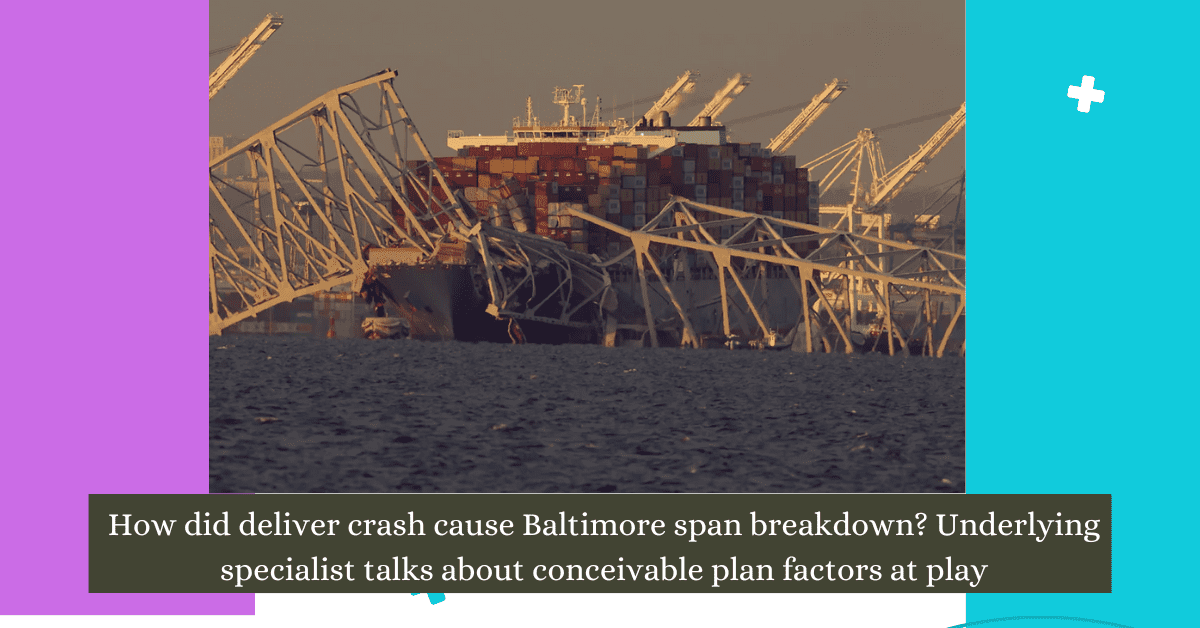What led to the Baltimore bridge collapse following a ship collision | Francis Scott Key bridge

A significant extension in Baltimore fell Tuesday morning after it was struck by a compartment transport.
The disastrous breakdown sent vehicles diving into the water, starting a multi-office crisis reaction including state specialists, crisis work force and the Coast Watchman, reports say. Water salvages are in progress.
Jerome Hajjar, the CDM Smith Teacher of Common and Natural Designing at Northeastern College, and current leader of the Underlying Designing Foundation of the American Culture of Structural Architects, says the breakdown features how more seasoned span plans might not have expected the dangers presented by business transporting vessels expanding in size throughout the long term.
He says the extension disappointment could have the consequence of a “befuddle between the size of the heap,” or the power of the boat crash, and “the normal burdens at the hour of the scaffold plan.”
“This is a genuine misfortune,” Hajjar tells Northeastern Worldwide News.
Video of the breakdown showed a vessel crashing into a mainstay of the extension, which then seemed to give way and breakdown into the water
The compartment transport should have essentially harmed the help structure, and an extension of this range, assuming the help structure loses its or even uproots fundamentally, that could be sufficient to make the scaffold fizzle,” Hajjar says. “Furthermore, when that help structure goes, the distance to the following backings on either side are excessively far.”
Hajjar proceeds: “It’s conceivable that as the help fizzled, it was basically pulling down the extension also. However, regardless of whether the extension had recently been bearing on it, assuming that help structure begins to fall flat, and it allows the scaffold to avoid down essentially — that is sufficient to cause the disappointment.
Northeastern CDM Smith teacher and seat Jerome Hajjar, says the breakdown might be a consequence of a “jumble between the size of the heap” brought about by the boat crash, and “the normal burdens at the hour of the scaffold plan.” Photograph by Alyssa Stone/Northeastern College
The steel-curved span, Francis Scott Key Scaffold, a piece of Highway 695, was the second-longest persistent support span length on the planet when constructed — and stays the third longest on the planet, as indicated by the American Culture of Structural Designers. It was finished in 1977.
The freight transport is a Singapore-hailed vessel named Dali. As per the New York Times, the proprietors of the 948-foot-long boat said it struck a mainstay of the scaffold around 1:30 a.m., including that nobody the boat was harmed.
Hajjar said it’s difficult to be aware assuming the extension was basically lacking. “It’s surely conceivable that there was nothing lacking with the scaffold — not when you take a power as extensive as a holder boat and crush it into a help,” he says.
Hajjar says that business vessels, especially in significant ports, frequently explore extensions of a comparable length to the Francis Scott Key Scaffold.
Hajjar says he can’t address the particulars of the plan of the Francis Scott Key Scaffold, yet adds: “I would accept that they plan these backings to have the option to endure some measure of sideways or sidelong burden like this.”
“What’s more, consequently I would likewise expect that this heap was fundamentally higher than common plan loads,” he says.
The most widely recognized reason for span disappointment is a cycle called scouring, or when the dirt around the scaffold’s establishment disintegrates.
“On the off chance that the extension support had been getting scoured for a really long time — significance, as the water surges by it, it corrupts the dirt circumstances at the foundation of the help — then it’s conceivable that a lighter burden could do this,” Hajjar says. “In any case, that is really difficult to say since this was certainly a major burden.”
Francis Scott Key bridge
As worldwide interest for products develops, Hajjar says business compartment ships have been getting bigger throughout the long term, prompting more navigational intricacies and expected perils.
“Ordinarily, with various disappointments that happen especially to spans — it tends to be attached to maturing foundation,” Hajjar says. “This one, nonetheless, that is not really the situation. The jumble between the size of the heap and the normal burdens at the hour of the scaffold configuration could be a significant connection.”
Hajjar adds: “Any breakdown like this, the primary designing local area views it truly in a serious way. We explore these down to the last detail, and at times that requires years.”
